No products in the basket.
Art History
Who was the amazing South African Artist Willie Bester? 5 Willie Bester artworks your need to know.
Hi, I am artist Lillian Gray and I have someone you need to meet, South African artist Willie Bester.
Willie Bester is a multi-disciplinary South African artist. He is best known for his sculptures, installations, mixed media and collage artworks, but he also practices oil painting and watercolours. He uses his art to comment on social and political injustices. In South Africa, his early work was dedicated to protesting against the Apartheid system. His work has made a serious impact in the changing of people’s perception. His artworks are regarded as hard-hitting with a lingering effect.
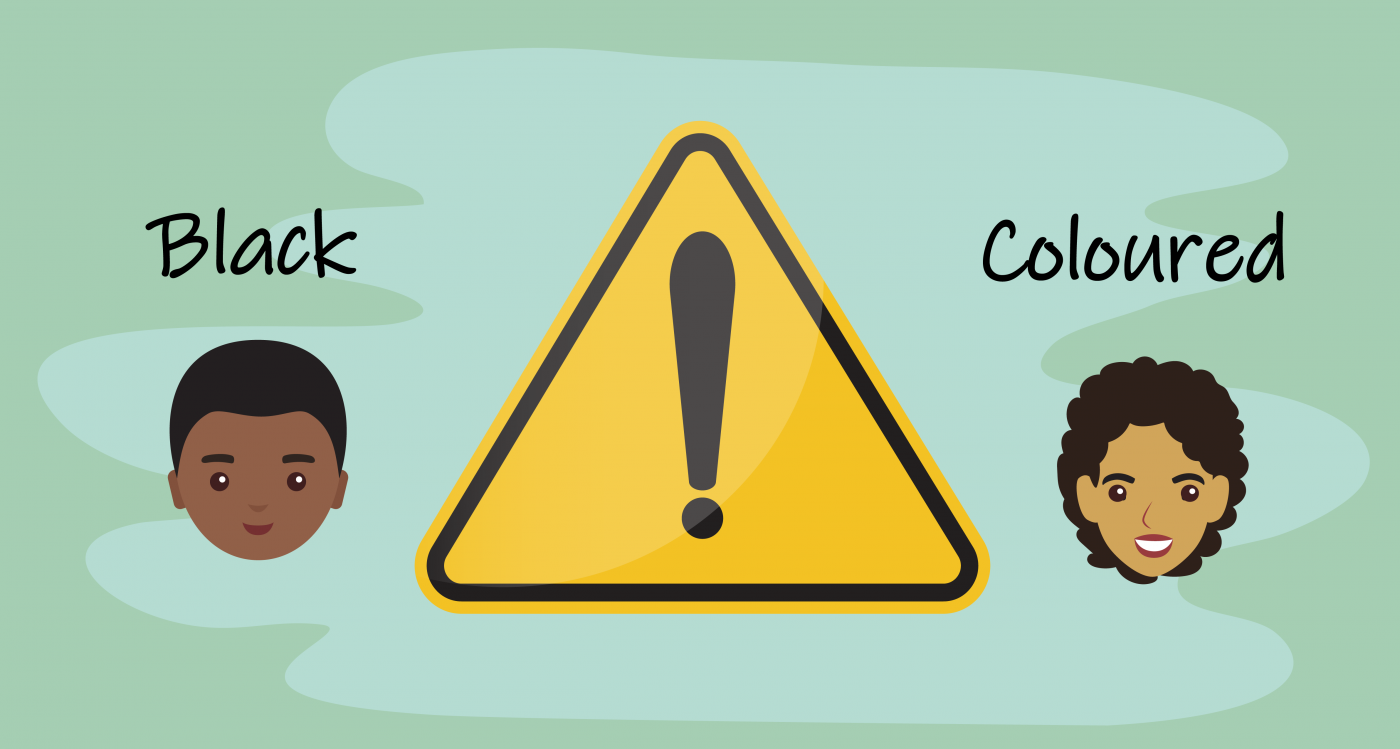
A word of caution here, some of the topics that Willie Bester’s art comment on is quite violent and atrocious, so it might not be suitable for very young viewers.
The story of a small impoverished boy!
Willie’s story is a story of a small impoverished boy raised in the oppressive apartheid system in South Africa, and this boy finally breaking free and finding his voice through the art that he has exhibited globally with international exhibitions in Belgium, Italy, Dakar, China, the Netherlands, Tokyo, London, Ireland, Spain, the USA and even in Cuba.
Because Willie uses found objects in collages to represent the real world, he is compared to international artists such as Pablo Picasso’s synthetic cubism and the early pop artworks of Robert Rauschenberg.
Willie Bester was born in 1956 in Montague, a very small town outside Cape Town in the Western Cape. Montague is known for its dried fruit and their beautiful, beautiful mountains.
So come with me as we delve a little bit and find out why he is so passionate about justice.
What was South Africa like when Willie was born?
Now 1956 is an important date: It tells us that it was the time of apartheid in South Africa. Apartheid was a system that separated people by race, into four racial categories to be exact: white people, Coloured people, Black people and Asians.
This system was really unfair because white people’s rights were prioritised above all the other races, so they were more privileged.
Now, you see that Willie’s trouble really started at birth, because from the word go, he didn’t quite fit into the system. You see, his father was Xhosa and therefore a black man and his mother coloured. Now back then it was against the law for people of different races to get married, so he was basically born a crime.
Willie’s parents weren’t married at the time of his birth, so he was given his mother’s surname and marked as Coloured, which was kind of better than being marked as black because coloured people had a little bit more rights than black people.
When he was six months old, his parents finally got married, however, this caused a lot of trouble for their family. His parents were categorized as a mixed-race relationship, so they weren’t really allowed to live together. The apartheid government wanted to split the different races, so there was a neighbourhood for coloured people and there were black workers that lived in single-sex hostels.
So Willie Bester’s family didn’t fit in with either and they had to kind of make a plan. The only place they could live together was in the backyard of somebody else.
To raise extra money his mother opened up a shebeen in the backyard and was constantly arrested for selling liquor illegally.
What was Willie’s memories of the farming community?
Now Montague is a farming community and as a little boy, Willie often witnessed violence and brutality between the farmers and the farmworkers, as well as the police mistreating his black dad. So these were a lot of images of violence and injustices that really cemented into his brain.
During his childhood, Willie Bester showed a natural talent for art.
Black kids and coloured kids didn’t have a lot of resources, never mind toys.
As a small boy, Willie loved making wire cars to play with and eventually he started selling them. A teacher at school noticed his love for art and encouraged him to enter an art competition. This really motivated Willie to explore his talents more.
Now at this time in South Africa, there was very little organized resistance to apartheid. Everybody just kind of accepted it and that was the way it was and they plotted along. There was a lot of racism, even between the different classes.
His mother’s family rejected Bester and his siblings because their father was a black Xhosa-speaking man and not the Afrikaans speaking coloured person they wanted her to marry. Things got even worse. In 1966 the family had to move to a township outside of town because of the new Group Areas Act.
The Group Areas Act is like the cornerstone of Apartheid policies. What it means is that South Africa was divided into these sections that certain races were allowed to live in. If you were of a different race, you weren’t allowed to live, operate a business or own any land in these areas.
But as you can see on this map, only a small amount of land was demarcated to the other three races. The ret was all given to the white people, even though they are the minority in South Africa.
Willie Bester’s teenage years
In his late teenage years, Willie Bester joined the South African Defense Force. A lot of teenagers living in rural townships decided to sign up during this time. He spent a year in the army and another in a military camp for the unemployed black youth.
This experience exposed Willie to the atrocities of war and the pointless deaths. After the army, Willie worked as a dental technician’s assistant. Working more in the medical field during this time, he kind of dabbled in art in and out, but it wasn’t until the age of 35 that he was a full-time committed artist.
What role did Bester play in the Resistance movement during the 1980’s?
During the 1980s, the resistance movements, like the Soweto uprising and the death of Hector Pieterson, inspired Willie Bester to return to his childhood interest in art.
He wanted to be a part of the movement, a part of their resistance, a part of breaking down apartheid, a part of creating a new, just world. I love this quote from Bester, where he says: “I was sort of brainwashed all my life to believe that I am less than other people, I thought art can restore our pride when you don’t agree with something, art is so strong, it will come out and state that you are also here, you are somebody and you are just like anybody else.”
In the 1980s, Willie decided to join the community arts programme in Cape Town. By joining CAP as a part-time art student, Bester met a lot of interesting people, people that were opposed to the apartheid system, people openly criticizing the government, and that was very unusual at the time.
This inspired Willie Bester to create some of his two first mixed media pieces, Forced Removals and Don’t vote.
Both these artworks protested the injustices of the Group Areas Act and the racial composition of the apartheid’s voter role. He was using township waste to emphasize the injustices of the Group Areas Act and the racial composition of the apartheid’s voter role.
What was his artwork, Forced Removals about?
In Forced Removals Willie Bester depicts the destruction of District Six in Cape Town. These removals were usually sudden and violent with police and soldiers entering the townships.
This was an emotional time for those families, forced to leave their homes with only the possessions that they were able to carry. Townships such as Sofia Town in Johannesburg and District 6 in Cape Town are two examples of flourishing communities that were completely destroyed by the Apartheid Government.
During this time he gained more confidence in his work and started working bigger and experimenting with larger structures and photography.
He says that during apartheid, freedom of speech was suppressed, so I decided to change the way I talk, to rather use my hands to talk for me.
Let’s take a closer look at some of Willie Bester’s most important artworks.
Hamba Kahle, 1993
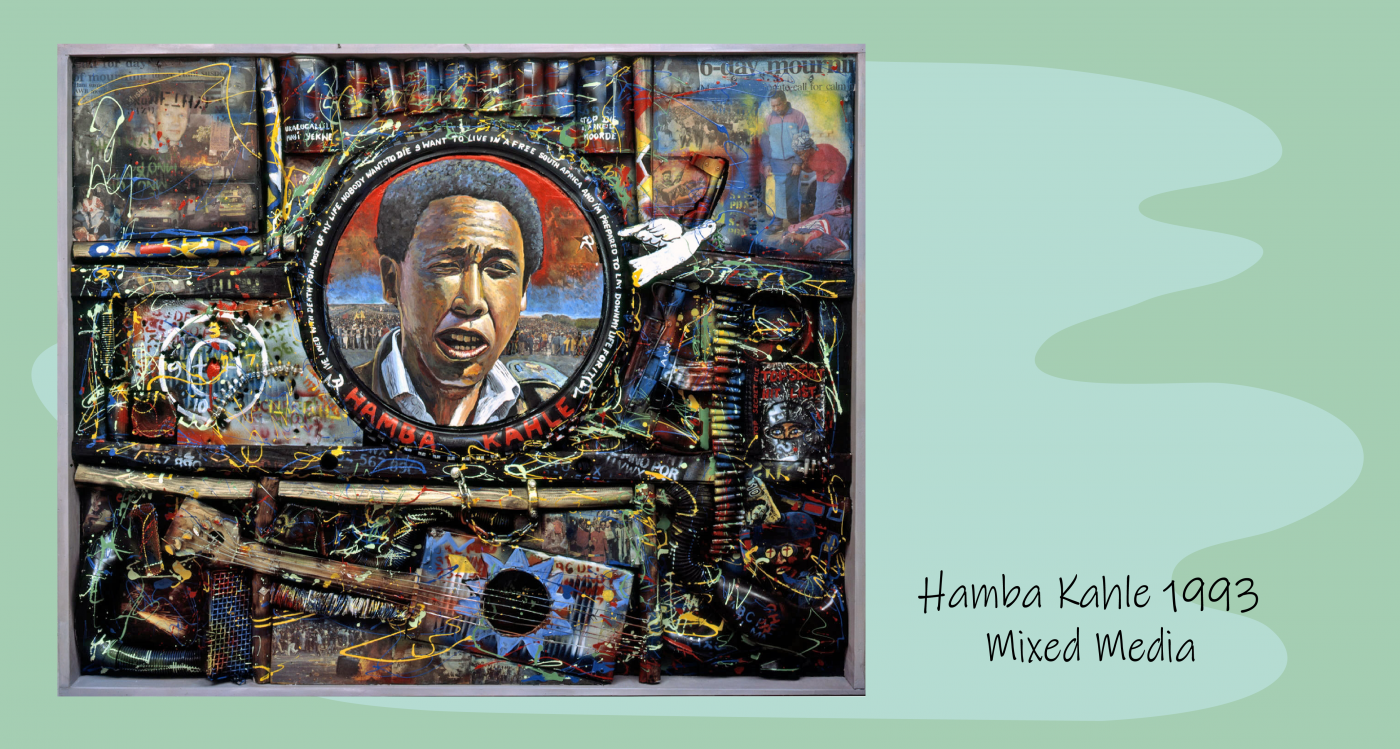
His artwork called Hamba Kahle was made in 1993 with mixed media. The central image of this work is a portrait of Chris Hani. He was the leader of the South African Communist Party and the chief of staff from uMkhonto weSizwe. Hani was tragically assassinated on Easter Sunday in 1993. Artist Willie Bester used various cutouts from newspapers and photographs to depict the circumstances of Hani’s death.
What was the symbolism and meaning behind it all?
In the top left corner, we see the murderer, the Polish immigrant Janusz Waluś.
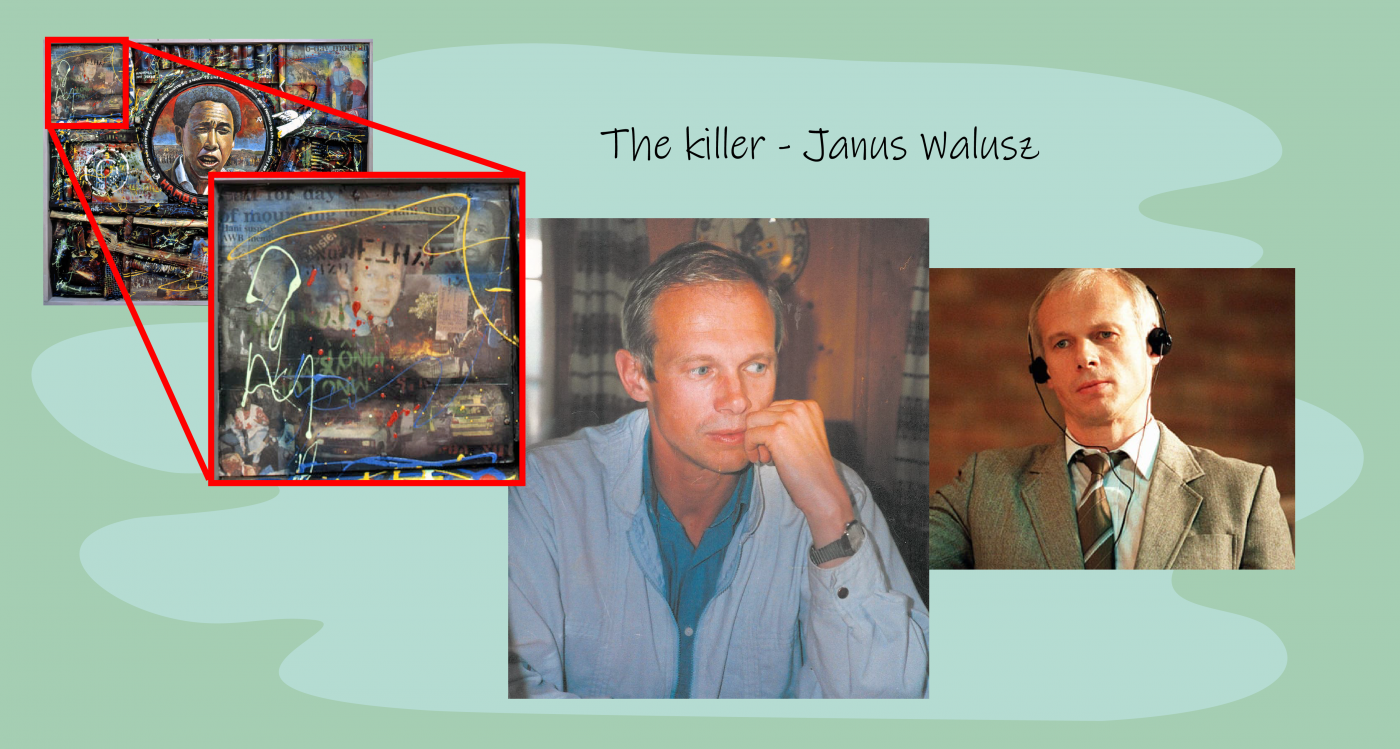
In the right-hand corner we see the six-day mourning process of Hani’s death and the violence it incited in South Africa. We see comrades grieving over Hani’s body in the centre of the artwork.
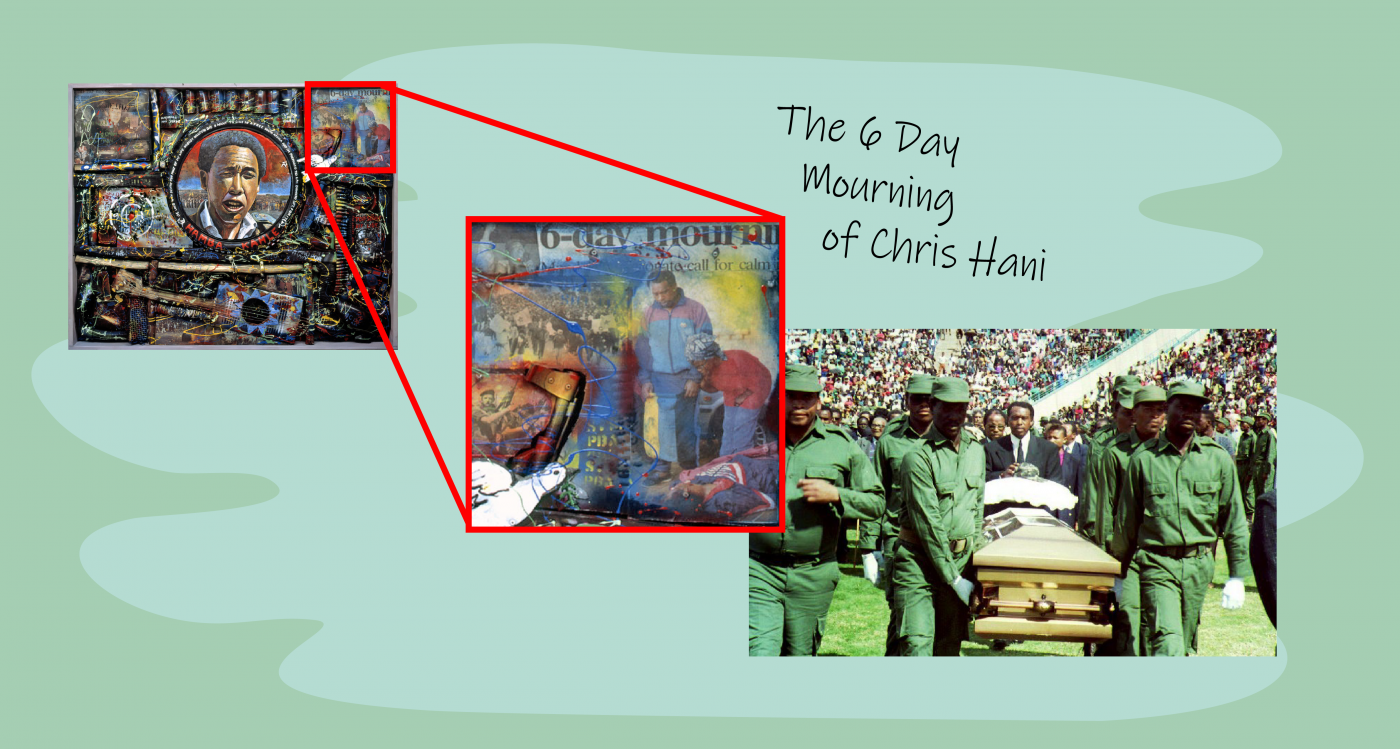
The portrait of Chris Hani is framed by a bicycle wheel. Now this wheel has got layers of meaning. It represents the fear of death by necklacing, using a burning tire to kill a person.
It also resembles a laurel reef and because the wheel can have an industrial connotation.
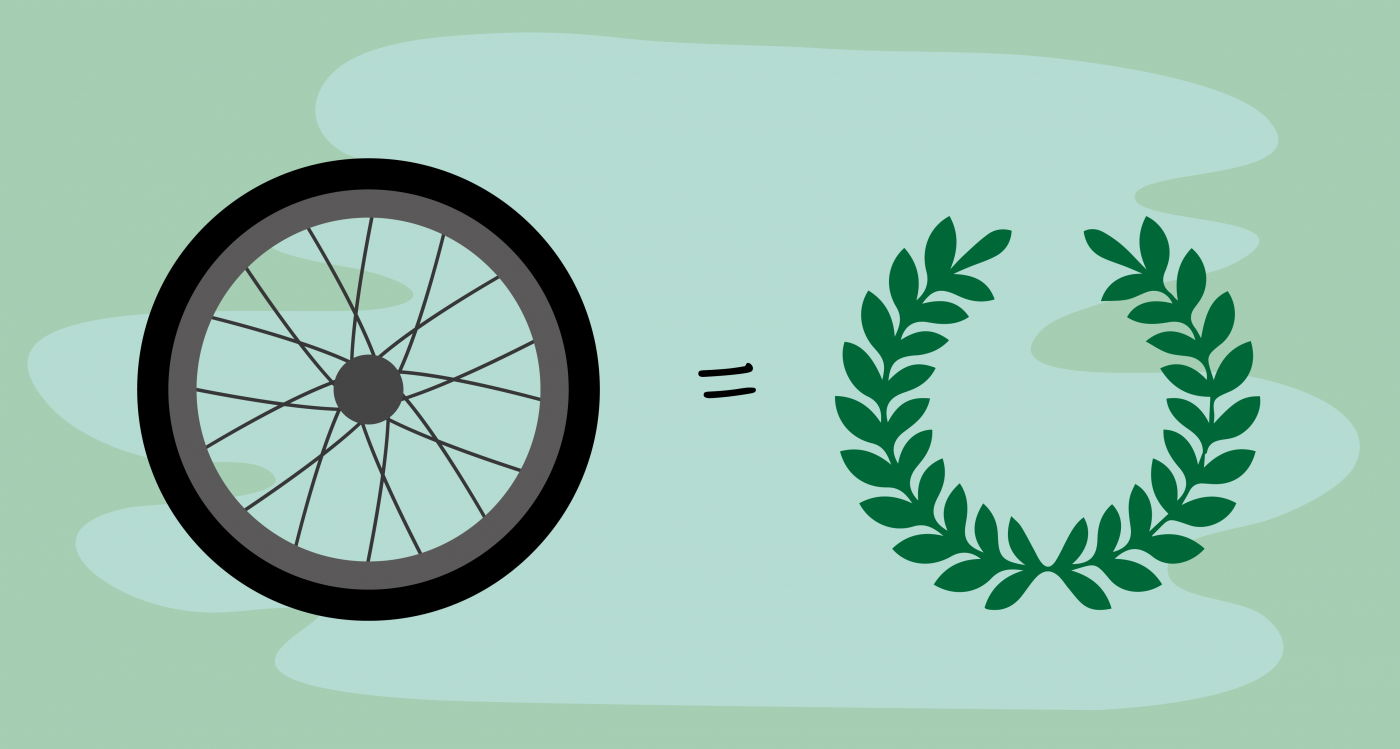
It could suggest Hani’s socialist belief, which is further indicated by the red colour of the sky, and the hammer and sickle emblems.

On the tire, the words are written: “Hamba Kahle” which means “Go gently” and the fateful words that Hani uttered in a television broadcast a few days just before he was killed.

The focus of this artwork is commenting on Hani’s achievements in the battle for peace in South Africa. When we look to the right, we can see a dove covering an AK-47.

This artwork also comments on the verification of Hani. On the left, we see a target and on the right, we see a top-secret hit list and how Hani was demonized by the media.
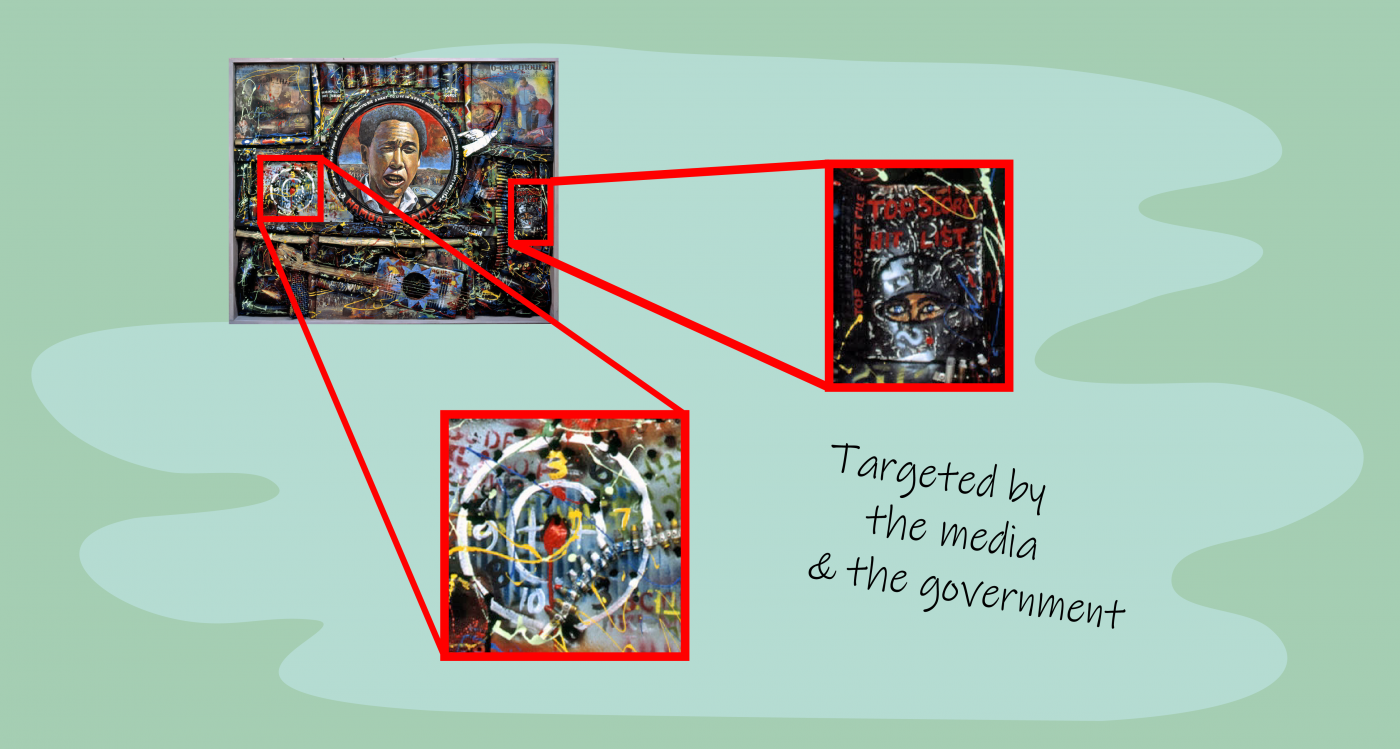
In the bottom right-hand corner, we see an image of a miner and his eyes are crossed out, showing the fatal record and tragedies that occurred in South African mines.
Just above him is an old banknote, showing the capitalist motivation behind mining in South Africa, and all the suffering it has caused amongst the black population.

At the bottom of the image, we see a tin guitar and to me, this shows a community that is still struggling to find joy in all this oppression. Just above the guitar, we see a yoke, indicating the subjugation of the majority of South Africans in this time.

Throughout the entire artwork, there is a scattering of numbers and letters which symbolizes the process of dehumanizing people by sorting them into different categories, marking them, stamping them and branding them as less. This comments on the passbook system of South Africa.
“Head North”
Next up, let’s discuss the artwork “Head North”, a monumental sculpture piece created by Willie Bester in 1995. This artwork depicts a massive ox on wheels with a gun mounted on his back.

As he moves forward, leaves behind him barbed wire.
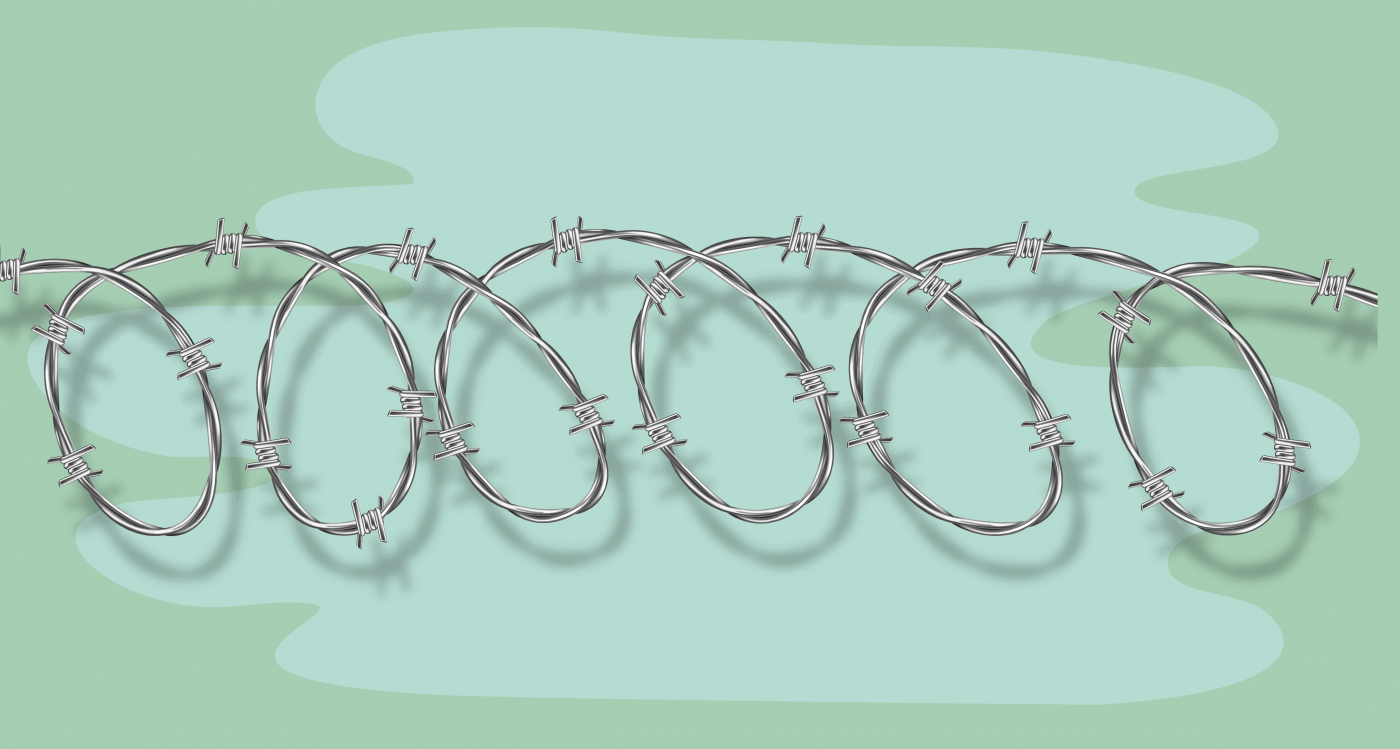
Entangled into the barbed wire are coffins marked with red crosses. No what could this artwork possibly be talking about? This artwork refers to the food trackage migration, known as the Great Trek.
It depicts the destruction of colonialism and the amount of Africans it killed in its wake.

“Migrant Labourer”
This mixed-media piece is called “Migrant Labourer” and was created by Willie Bester in 1993. Now, previously I explained to you the Group Areas Act where the government forced people that weren’t white, to go to live in a specific homeland.
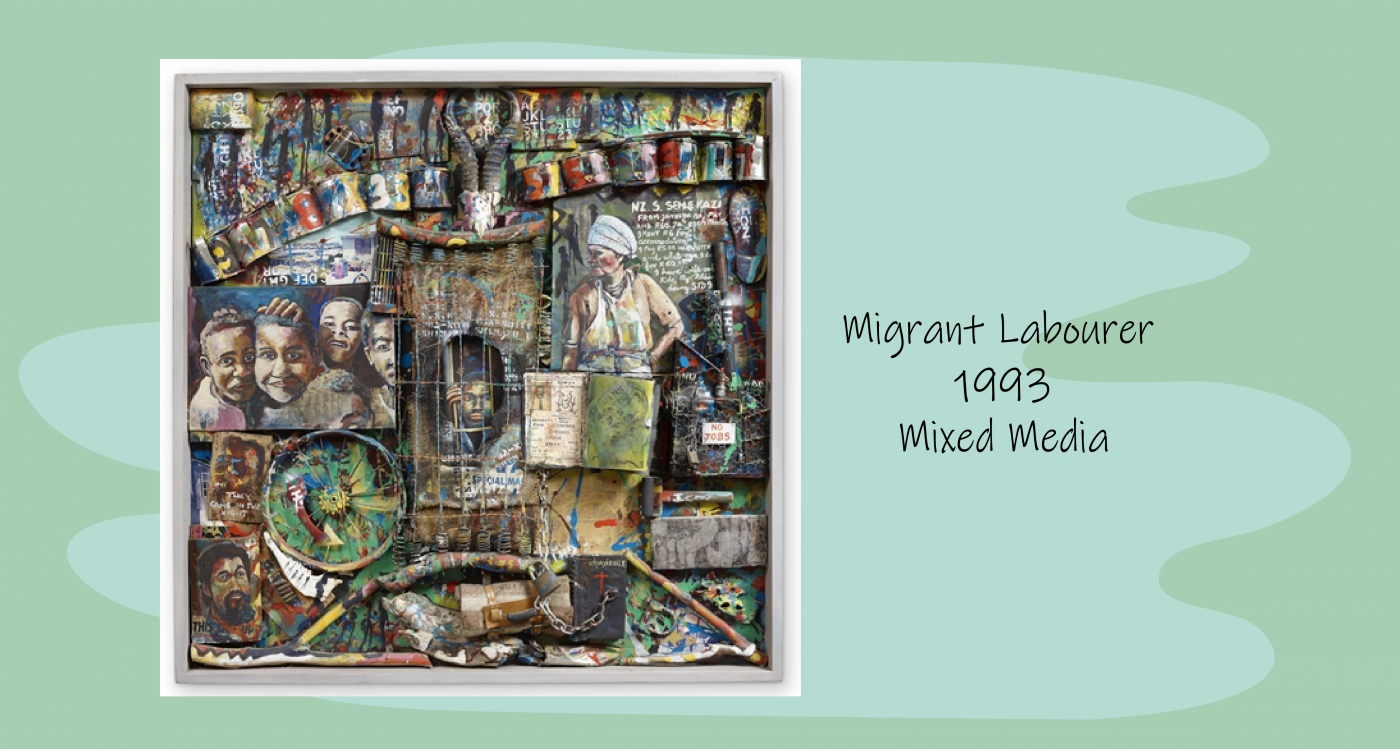
Now, these homelands did not have a lot of resources and black men could not find jobs in these areas. They were forced to leave their families behind and go and work in the cities. In the cities, they had to go and live in single-sex hostels with atrocious living conditions. They generally worked as miners and were paid very little.
This specific artwork done by Willie Bester focuses on one migrant labourer called Semekazi. In the middle of the artwork, we see Semekazi and his bed being changed into a prison.
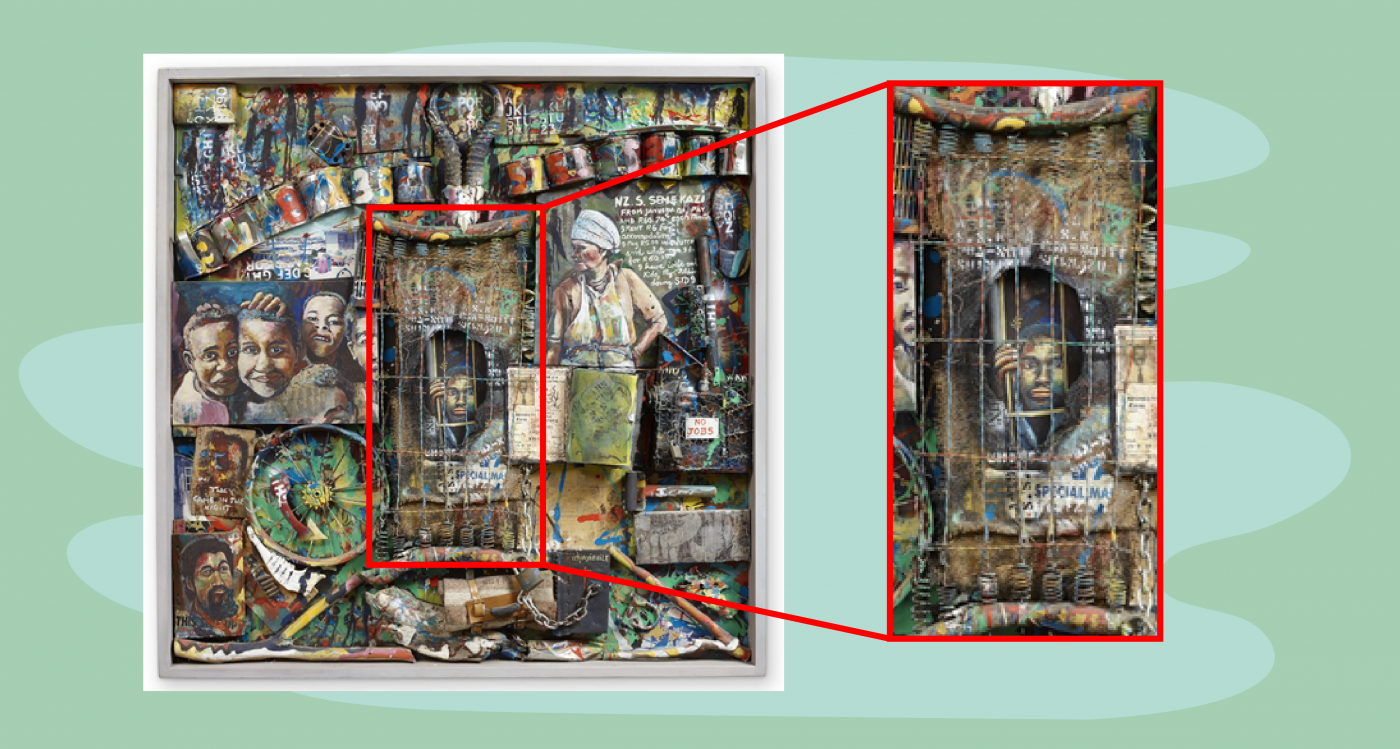
Now migrant workers back then had to actually pay monthly rent for their bed in these hostels to be able to work in the mines. The bed is connected to a chain with a lock on it showing how Semekazi is a prisoner of the apartheid system.

They proclaim to be Christian, they proclaim to be the followers of Christ yet, they brand people, classify them, create hatred and violence. The artwork also depicts the two worlds that Semekazi lived in.
We see the love for his homeland, the longing for his children and his wife that are still living in the homelands, that he probably only saw once a year, and on the other side, we see the industrialization, the miners working the city, the cold-heartedness, the isolation.

The use of bones depicts this rural living in the homelands, where all the metal and wire depicts city living.
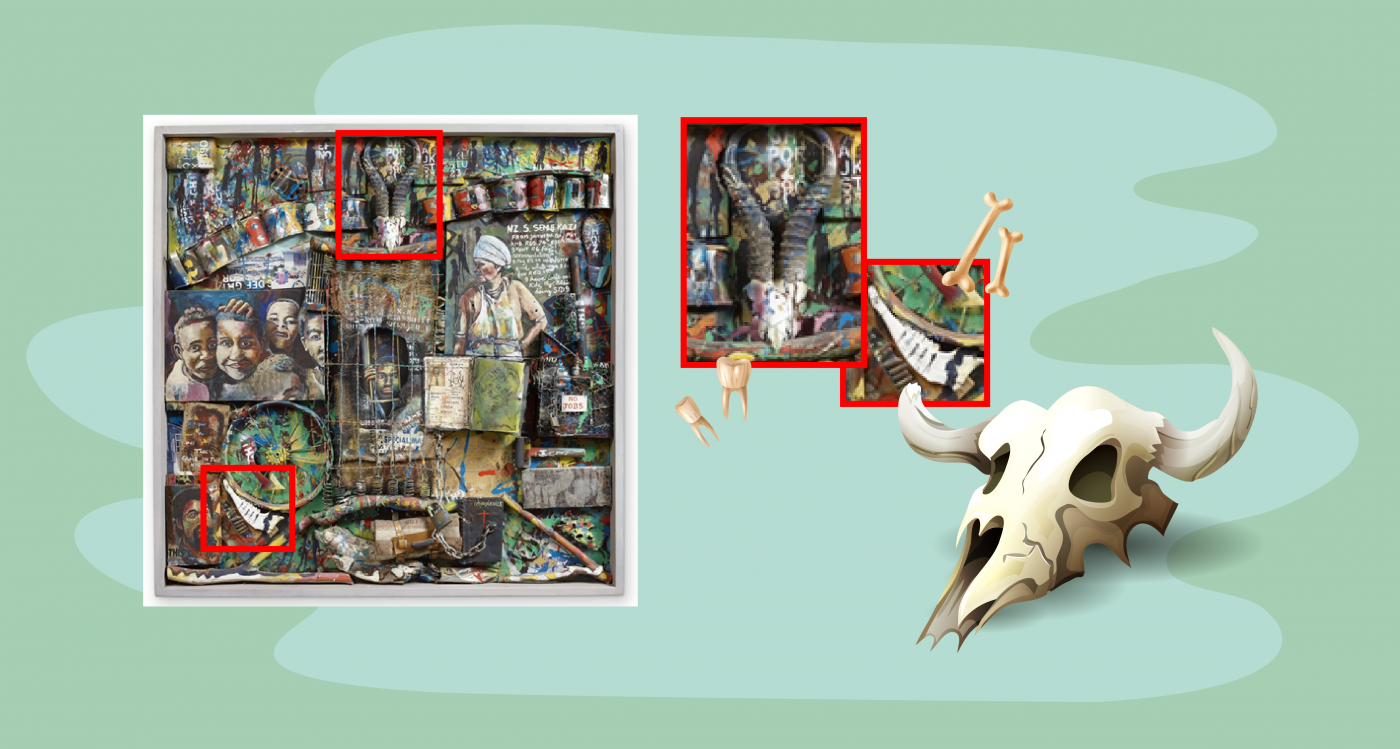
At the top of the artwork, we see all these tins lined up with numbers. This comments on how the apartheid government only saw people as numbers.

In the bottom right-hand corner we see a roller with a pad of ink. This also comments on the classification of people and links to the passbook. Semekazi’s story is quite tragic. He worked for years and years in the mines of South Africa but when he applied for his pension from the construction firm, he was told that he was listed as dead and was not allowed to get a pension. This was often the case with a lot of migrant workers.
Six months after Willie Bester captured the sad life of Semekazi he was murdered by gangsters.
In the artwork mechanical clamps become handcuffs and Willie Bester shows how Semekazi was a captive of the apartheid economic system. He never stood a chance in getting a retirement with his family in the Transkei, and although the work tells the story of Semekazi specifically it was the sad truth and reality for many black people in South Africa.
These are just some of the highlights of Willie Bester’s artworks done during Apartheid.
What did Willie do after Apartheid ended?
After apartheid ended Willie Bester continued to produce works and continued to advocate for human rights and humanity. In the wake of Apartheid, he sees himself more as an activist than as an artist and he strives for human dignity for all.
He said that he would believe things would change for the better after 1994, but still finds a lot of injustices and inequalities in the new South Africa, so he continues to expose greed, poverty and corruption in society.
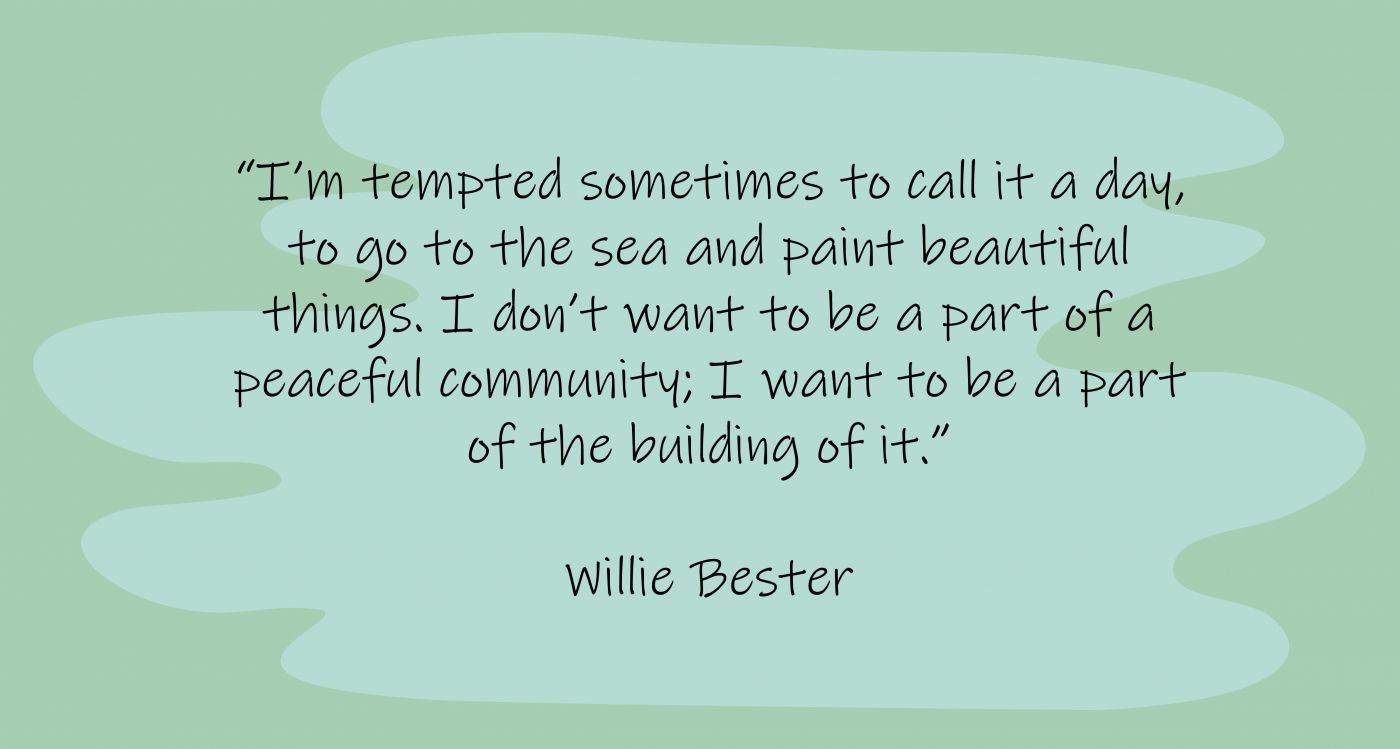
With his artworks, he said “I am tempted sometimes to call it a day, to go to the sea and to paint beautiful things, but I don’t want to be a part of a peaceful community. I want to be a part of building it.”
He believes that it’s important to keep the memory of apartheid alive so that people can prevent repeating the atrocities that occurred. He says he cannot be quiet and remain silent when he sees wrongdoing. “I believe that we must protest against that which is wrong. There is no form of escape, remaining apolitical is a luxury that South Africans simply cannot afford.”
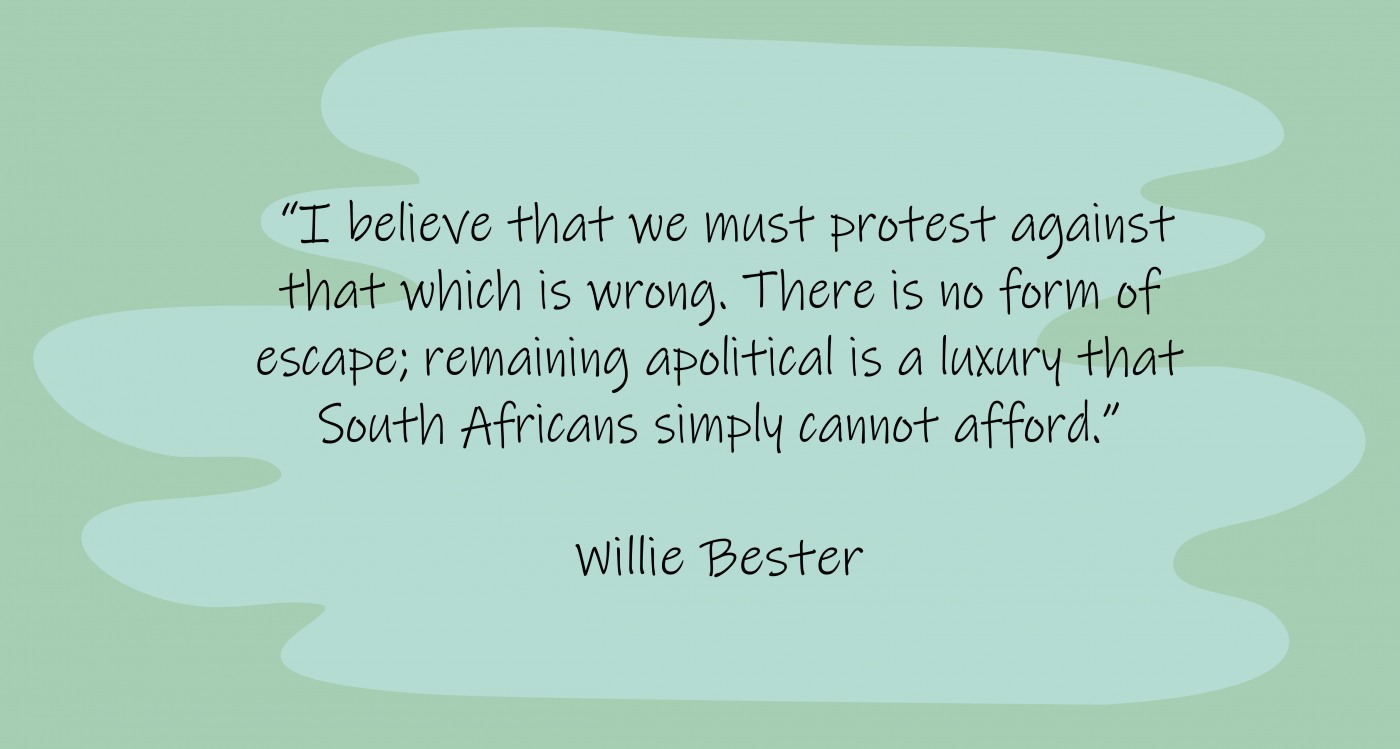
Willie Bester’s post-Apartheid works
Trojan Horse II, 1994
Now I would like to discuss two artworks that Willie Bester created in his post Apartheid era even though one of the artworks refers to an event in the apartheid times. It shows how Willie Bester is keeping the memory of apartheid alive, so that we do not repeat these atrocities.
The first artwork I would like to discuss is called “Trojan Horse”. It is a sculpture series created by Willie Bester consisting of three different horses.

The artwork, however, comments on something tragic that happened in 1985 in the coloured community of Athlone in Cape Town. Some of you might be familiar with the story of the Trojan Horse, Where the Greeks gained access to the City of Troy. After 10 years of an unsuccessful siege.
They pretended to create this beautiful horse that was a gift to the city, while meanwhile inside soldiers were hiding and once they received the gift, pulled it into the city gates, the soldiers jumped out, and defeated the city of Troy. These days a trojan horse is a symbol for somebody pretending to come in kindness, to be dressed as a gift, but in fact it is an act of violence and War.
Now back to the coloured settlement of Athlone in Cape Town in 1985 the Apartheid police were performing various raids in this township and they were met with a lot of protest.
People were throwing stones, they were burning tires. They were just sick and tired of the police coming into their streets. The people started protesting with signs such as “troops out of townships”, and eventually the army retracted and they left. However later, a truck arrived with a lot of crates on it, and it just kept on driving up and down the main road of Athlone.

Eventually, people started throwing stones at the truck wondering what it was doing there? Immediately the police jumped out of the crates, fully armed and opened fire on the civilians.

Moments later, three boys lay dead by the side of the road. The one was only 11 and on his way to the shop to buy sweets.
Artist, Willie Bester, was outraged by the situation and he said “this is as low as you can get”
To commemorate the trojan horse massacre Willie Bester created three large sculptures. They almost look like children’s toys. These massive horses are made out of scrap metal.
The use of metal gives the sculpture an aggressive industrial look. The horse’s life-size and a motorbike motor is used to make its belly. At the top there’s a machine gun protruding, symbolizing the guns that came out of the truck’s crates, containing the police. At a closer look, we see this drips melting down, which represents the dying mentality of Apartheid and how people were slowly letting go of this mindset.
A bible is chained to the horse and the tail is made of strips of rubber which the police used to whip people. Once again showing the dualism in the Afrikaner between Christianity and oppression.

The horse appears aggressive and naked, revealing all its bones, its raw muscles, its sinews as if the Apartheid system is finally being exposed for what it was.
“Who let the dogs out” 2001

This artwork by Willie Bester is called “Who let the dogs out?” It’s based on a video that leaked into the public sphere in 2000 it was quite a disturbing video. It was of the South African Police Forces, using illegal immigrants from Mozambique to train their police dogs. In detail, they filmed how they trained German Shepherd dogs to bite and kill. The officer filming this also quite perversely zoomed in on all the wounds and, in detail showing the destruction the dogs caused.
Bester’s artwork picks up the perversity of the situation and shows sadism and voyeurism.
The sculpture that he created is of two menacing figures, focusing on a figure lying in the middle of the floor whimpering with fear. The one figure is a police officer and the other a cameraman. On the side of the victim, is a dog biting its stomach. It was almost not needed to depict the dog, as the malice and sadism are depicted by these two large figures and the absolute terror on the victim’s face.
This incident of the video is a brutal reminder of how much racism is still a part of South Africa.
It’s also upsetting that a member of the police force filmed the brutality in such detail.
Willie Bester exhibited this artwork with a soundtrack of dogs barking and to the side, through the people you could watch the actual footage that the policeman filmed. Although it is shocking that the incident that inspired this work took place post-apartheid. It shows how violence is ingrained in South Africa.
As a legacy of apartheid Bester is an artist who has confronted this violence in an explicit manner.
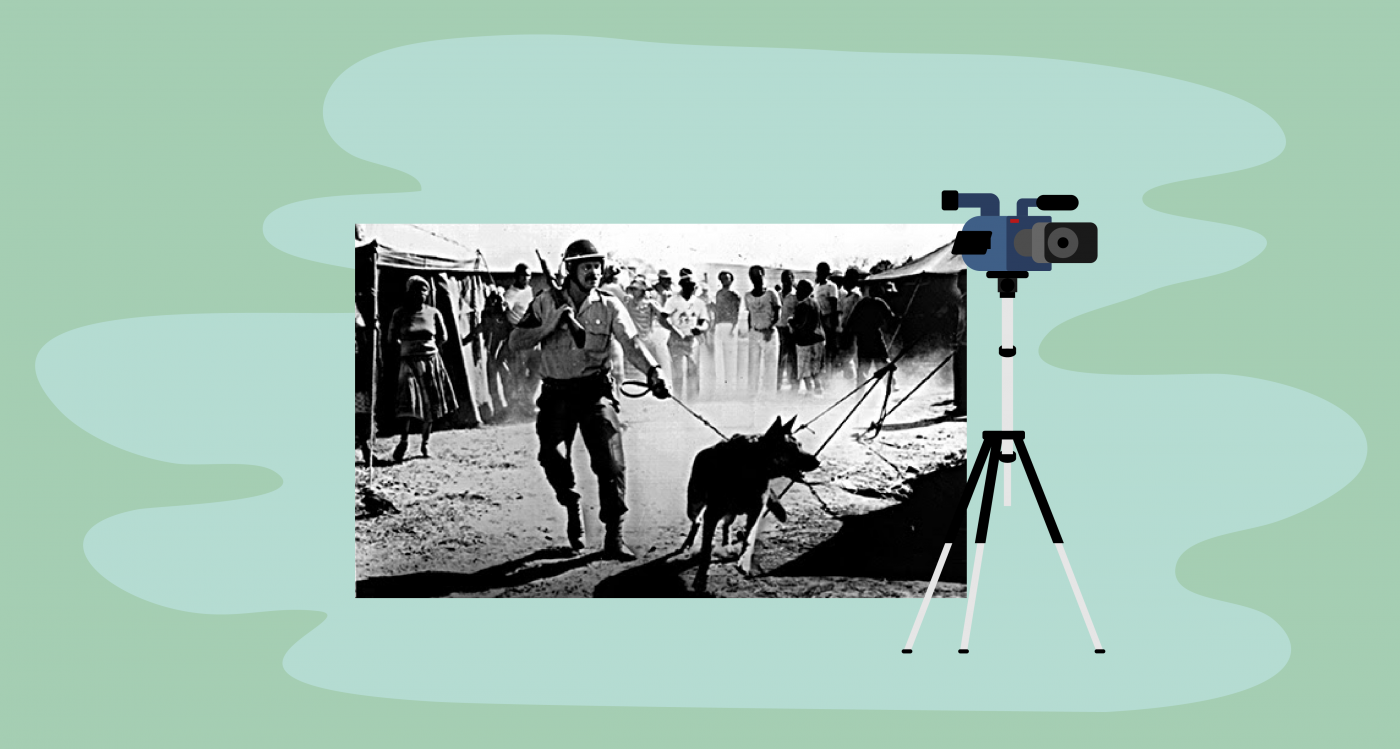
The title of the work is ironically the same as a pop song of the time.
Bester, in this work, reminds us that all too often in our society that dogs are let out, and that there is still a lot to be done towards a more just society.
That concludes this video discussion of artist Willie Bester’s work.
Back to Bester’s history!
Willie has exhibited all across South Africa such as Cape Town, Johannesburg, Bloemfontein and Stellenbosch. Internationally he has exhibited in Belgium, Italy, Dakar, China, the Netherlands, Tokyo, London, Ireland, Spain, the United States of America, Germany, Cuba and Amsterdam. Willie has also been the receiver of lots of awards for his amazing contribution to protest art. In 1992 the French government honoured him with an award.
In 2003 he received an honorary medal for the promotion of fine arts from the “Suid-Afrikaanse Akademie vir Wetenskap en Kuns.” He has also received the Order of Ikhamanga in Silver by the South African government.
In April 2019 Bester was awarded an honorary doctorate by the University of KwaZulu Natal for his contribution towards the protest of Apartheid.
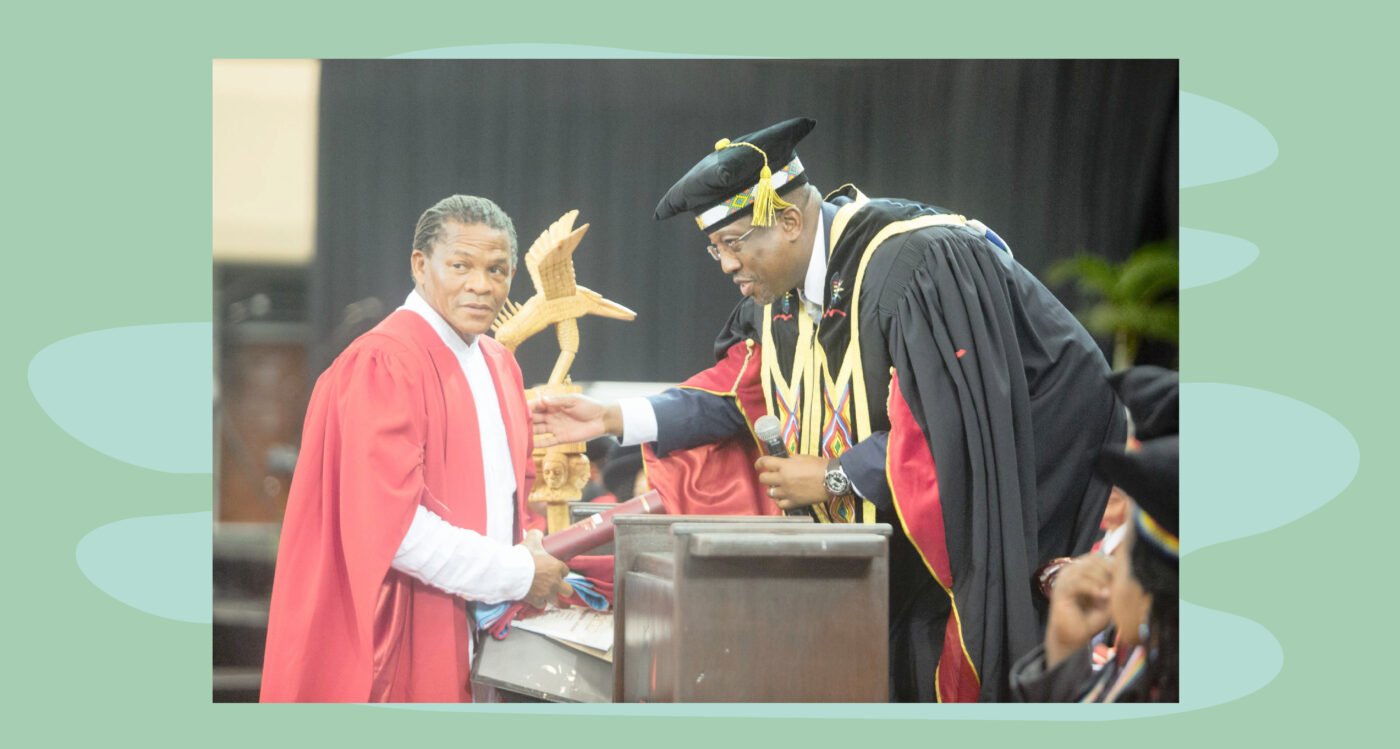
Currently, Willie Bester lives in Kuils River in South Africa with his wife Evelyn and their three children. His house is an extraordinary expression of his individualism and artistic abilities.

What was his Subject matter?
What did Willie Bester create, what was his subject matter?
The subject matter he depicted in his works were of the communities oppressed under Apartheid. It mainly depicted true-life incidents and bitter experiences during Apartheid rule.
Where did Willie Bester create his artworks?
Willie Bester mainly creates from his home in Kuils River in Cape Town, but he depicts scenes from all over South Africa.
What was his style?
What was Willie Bester’s artistic style? Like I said at the beginning of this video Willie Bester was a multi-disciplinary artist, but he is well known for his sculptures and mixed media collage work.
Willie uses a lot of found objects from townships and re-appropriates them this gives his artwork layers and layers of meaning. He’s almost like an archaeologist reconstructing scenes by using discarded objects from the surroundings.
His artworks often incorporate photographs or newspaper clippings from the media. The use of words is very important to Willie Bester and adds another layer of meaning. In this sense, his work is often narrative in nature.
He also uses found objects such as tin cans, car tires, scrap metal signage.
He sources objects from the streets of townships, rural areas, scrap yards, hardware stores, hospitals and power stations. He often combines oil paint to create naturalistic images into the work, and also add some of his own photographs.
Bester makes extensive use of symbols in his artworks. His painting style ranges from Naturalism to Expressionism. Abstract drips of paint are used to unify all these pieces.
What is the purpose of Willie Bester’s artworks?
Willie Bester’s artworks serve as a visual documentation of certain incidents in South Africa’s history. It allows us and encourages us to remember these incidents, so that we may never repeat this atrocious history.
The artwork strives to change the way people think and spurs us on to be a unified South Africa.
And that’s the story of the amazing South African protest artist Willie Bester. He is still alive and living in Cape Town today, and I hope you might bump into him someday.
I’m Lillian Gray, South African artist and a lover of art history.
BUY OUR WILLIE BESTER WORKSHEETS
Worksheet pack that includes notes and fun activities. Ideal for art students and history students to learn more about the Artist Willie Bester


Pingback: Vladimir Tretchikoff: Who was this Amazing South African Artist ? Which 2 artworks were his most prolific ones? - Lillian Gray - Art School